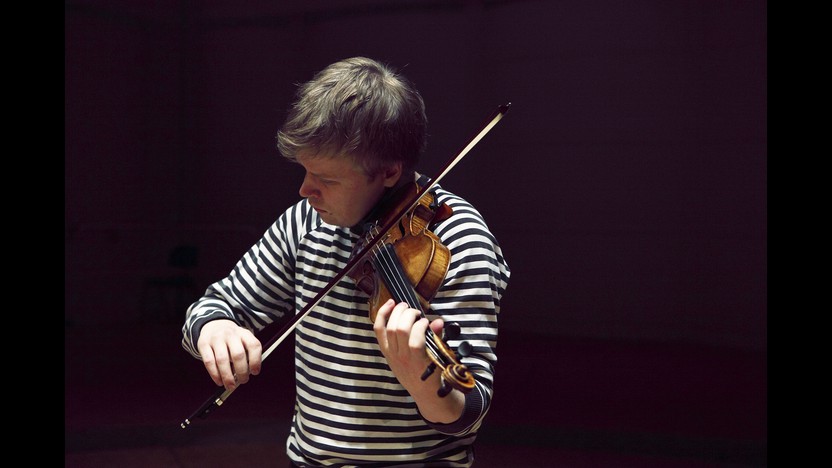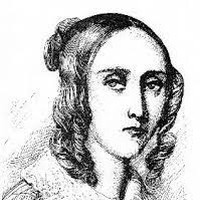Pekka Kuusisto Plays Mendelssohn’s Violin Concerto

Sponsored By
- May 22, 2020


Sponsored By


Dreaming a world's edge was commissioned by the League of American Orchestras with the generous support of the Virginia B. Toulmin Foundation. The movements are performed without pause.
Many of my recent compositions link to natural environments and ecosystems, particularly landscapes that are fragile or endangered. This piece was inspired by a photography exhibit I recently saw at the Los Angeles County Museum of Art featuring the work of Thomas Joshua Cooper. He traveled to some of the most geographically remote places on the planet and took his photos — usually with only one exposure for each location — using an antique nineteenth century camera. I was awed by how these luminous pictures of rocks and seascapes seem to dissolve the frame and create a sense of limitless eternity. Especially moving are the photos of the polar regions, with their extremity and evocativeness, such as “Dreaming the North Polar Winter Solstice” or “Uncharted Danger, Clear” in Antarctica. There’s also a kind of elegiac quality to these photos, as with climate change many of these places will soon be gone or greatly changed.
In my music I like to use an expanded palette of instrumental techniques that elicit as many colors as possible. Particularly important to me are fragile, delicate, noisy and unstable timbres. The overall form of this piece is in four movements played without pause, with strong correspondences between the first and fourth movements. Dreaming a world’s edge was commissioned by the League of Orchestras with the generous support of the Virginia B. Toulmin Foundation. It was composed for The Saint Paul Chamber Orchestra and this premiere is gratefully dedicated to them.
Cindy Cox ©2020

(Duration: 31 min)
Louise Farrenc, already an accomplished pianist, earned a coveted slot at the Paris Conservatory when she was 15. Female students were barred from training as composers, but the composition teacher Anton Reicha recognized Farrenc’s talent and gave her private lessons that continued after she got married at seventeen and left the conservatory.
Marriage often spelled the end of a composing career for even the most talented young women of her century, but Farrenc married a man who encouraged her to keep writing, and who was able to use his access as a music publisher to advance her interests. She also leaned on her own fame as a pianist, bolstered by her eventual appointment to be the only woman on the permanent faculty of the Paris Conservatory. Most of her early compositions were written for solo piano, and her later works emphasized chamber music that featured piano parts she would perform herself.
Considering the difficulties Farrenc had getting orchestral music performed (rarely) or published (never in her lifetime), it makes sense that her output was limited, comprising just two overtures from 1834 and three symphonies from the 1840s. She did manage to get her Third Symphony premiered on a prestigious Paris series in 1849 — after the esteemed old conductor died and was replaced by someone younger and more open-minded. It didn’t help that she was going against the grain of French style, taking inspiration instead from Ludwig van Beethoven and others in his German-Austrian lineage, including her own teacher Anton Reicha, who had been closely aligned with Beethoven in Vienna before coming to Paris. In that sense, her sturdy G-minor symphony is really a sibling of those by her German contemporaries who followed Beethoven’s path, especially Felix Mendelssohn and Robert Schumann.
Farrenc’s Third Symphony opens with a slow introduction, a format popularized by Franz Joseph Haydn, before proceeding into a stormy and full-throated main theme. The slow movement unfurls as a tuneful song without words, while the lively Scherzo has a light and bewitching airiness indebted to Mendelssohn. In the finale, certain melodic cutbacks and sighing phrases evoke Wolfgang Amadeus Mozart’s own symphony in the same key of G-minor, No. 40. These impulses borrowed from the German-Austrian sphere were almost subliminal in Farrenc’s language, a function of her strong training and artistic independence at a time when writing such music in France did her no favors.
Aaron Grad ©2024

Felix Mendelssohn was a teenager when he met Ferdinand David, a virtuoso violinist one year his junior. Later, when Mendelssohn became music director of the Leipzig Gewandhaus Orchestra, he invited David to join the orchestra as concertmaster. In 1838 Mendelssohn suggested to David, “I’d like to write a violin concerto for you next winter; one in E minor sticks in my head, the beginning of which will not leave me in peace.” The piece gestated for six years, until Mendelssohn fleshed it out in the summer of 1844. While writing the work, he corresponded frequently with David about violin technique, even asking for further advice after sending the score off to be published. David debuted the concerto in 1845, accompanied by the Leipzig Gewandhaus Orchestra. Mendelssohn died two years later following a series of strokes, leaving the Violin Concerto as his last completed orchestral work.
Mendelssohn’s Violin Concerto is full of innovations in form and texture, but perhaps its most radical quality comes from what it lacks: gratuitous showmanship. While the violin protagonist certainly encounters technical challenges and brilliant passages, every gesture is at the service of a shared musical discourse with the orchestra. Some of the most magical moments are those that defy conventional responsibilities, as when the violin launches immediately into the brooding first theme, or when it leaves that same melody to the orchestra after the cadenza, instead countering with ghostly arpeggios.
A single held bassoon note links the first movement to the second, blooming into a heartbreaking “song without words” crooned by the violin. As the slow movement recedes, a dramatic transition provides a link to the finale, with the home key recast as a sunny E major. The buoyant material affords ample opportunities for glitzy passagework, while a regal contrasting theme introduces a note of grandeur. It is fitting that this last major theme reworks the rhythms and intervals of the violin’s initial melody: What first appeared in the concerto as a lonely, searing question returns transformed into a knowing answer, expounded together in a mood of communal cheer.
Aaron Grad ©2014
Get driving directions and find nearby parking.
Find dining options close to the venue.
View seating charts to find out where you'll be seating.
Get driving directions and find nearby parking.
Find dining options close to the venue.
View seating charts to find out where you'll be seating.
